
All games are a mixture of gameplay and story. Whether it’s full action with little story like classic arcade games, or almost full story like point and click adventure games.
This isn’t a zero sum game though, and games can have gameplay and story in equal measure without compromising one or the other. It’s difficult, but possible.
Lotus Reverie: First Nexus tries to manage this with its attempt at a unique and strategic combat system on top of its philosophical narrative. But does it succeed?
Lotus Reverie: First Nexus
Developer: Keinart Lobre
Publisher: Keinart Lobre
Platforms: Windows PC (Reviewed)
Release Date: January 14, 2021
Players: 1
Price: $15.99

To get right into it, at its core Lotus Reverie: First Nexus is a Visual Novel. More accurately, it’s the first arc of a story (a “First” Nexus if you will).
The game follows the story of an amnesiac girl named Cinque, who finds herself thrust into a game of life and death. Not too long ago, a mysterious monolith descended on the world and dictated a set of rules.
The gist of them is that for each human a magically summoned “tulpa” will aide them. However the tulpa, which is sustained by magic, must absorb others to survive. Meanwhile the human and tulpa are bound to share the same fate.
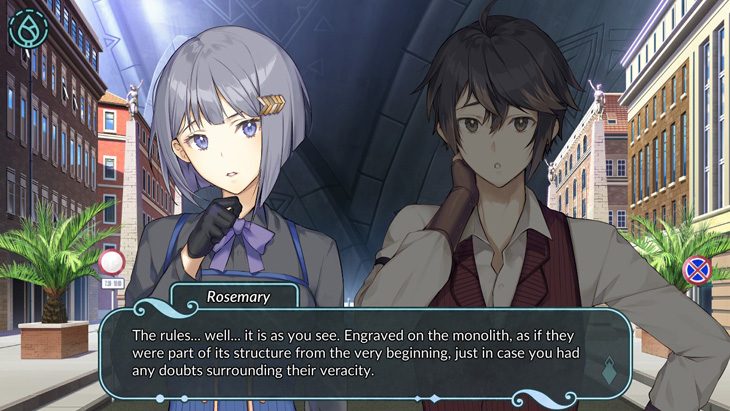
These rules and the situation means that human-tulpa pairs must fight one another to prolong their lives; until but one remains. But among the bleak death game there’s one small community.
The residents of the castle know they’ll have to fight and kill each other one day. But that day isn’t just yet, and they live together until the ephemeral lifespan of their tulpa forces them to fight.
Cinque however, after waking up outside of the castle is a problem. If there’s a tulpa for every human, Cinque now makes an odd number living in the castle. This makes Cinque an anomaly, a tulpa or human separated from her partner. Or worse; it’s possible her tulpa is lurking around.
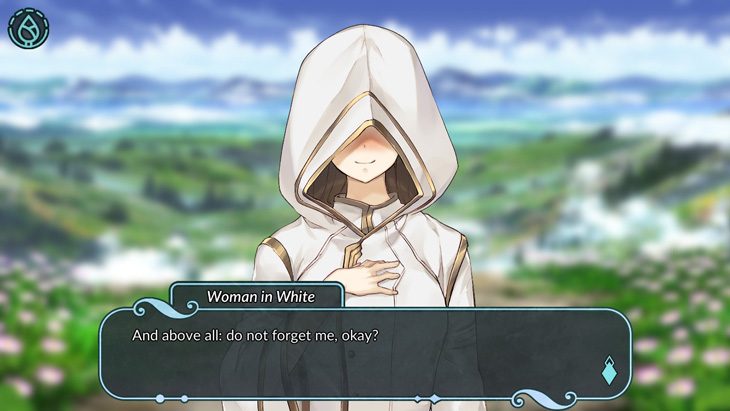
Nevertheless she’s allowed to stay in the castle, but must deal with the distrust of her new “family”. Thus begins one half of the gameplay: time management.
Players will need to balance their time between exploring, continuing the story, and training themselves both magically and physically. A tension bar slowly increases as the days pass, and it grows exponentially if they explore too much or sneak out of the castle.
Luckily the de facto leader Thistle is willing to regard you as an informant to reduce the tension by proving your loyalty. By snitching on the same people whose trust you want.

Here’s the thing to get out of the way; all the actual gameplay facets feel entirely unnecessary. The time management, the combat, all of it. Luckily the game has both narrative and combat modes which can allow you to skip combat all together. I played in the “Mixed” mode, which provided the full experience of the story and combat.
But here’s the thing, the game feels actively worse for trying to include these gameplay elements. The time management is shallow at best, and wholly irrelevant at worst.
Unlike other games like Long Live The Queen or Princess Maker, there’s no stat juggling to make the time management interesting. Even the stats that dictate how many combat styles and spells Cinque can equip are irrelevant, as it only takes 3 points in combat to equip the strongest style at the end of the game, and about the same to equip the most important spells (Bastion and First Aid).
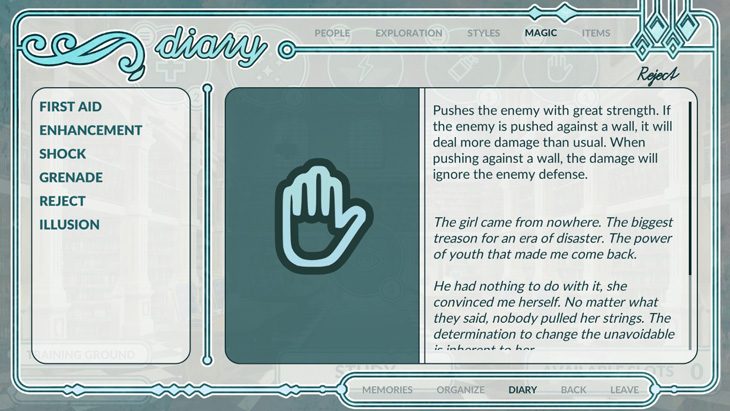
The combat is also disappointing. During the tutorial fight I’ll admit I was impressed with the way turns happened simultaneously, and you could give characters AI responses to specific threats. But the AI only goes as deep as Run Away, Engage, or Ignore.
Without offering too many spoilers, your ally in most fights uses a sniper rifle. When you set their AI to engage however, that means they will get as close as possible despite being able to shoot from about three tiles away.
The AI will also continue chasing into unexpected hazards like magical fire walls. Frankly put; it’s an ambitious and creative system, but it flops in execution. The first (not including the tutorial) and final fights both felt like complete RNG by the time I’d died enough to actually understand the best course of action.
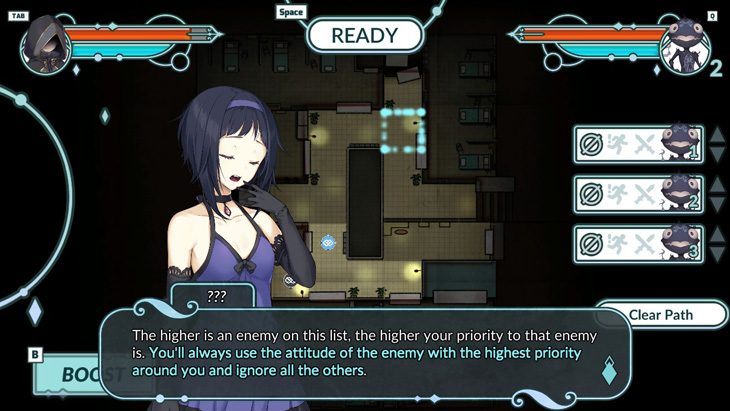
This isn’t to say anything about the fact that it takes about two hours of gameplay to reach the first fight after the tutorial (maybe more if you do more side stories or read slower). By the time I got there, I had already forgotten how to utilize everything I learned in the tutorial.
Basically, you’re not missing anything by turning off combat. But in contrast, to the disappointing gameplay, the writing is fantastic.
The writing sways between saccharine slice of life, and deep (albeit at times pretentious) philosophical monologues. But they both serve the same purpose: creating drama.

Lotus Reverie: First Nexus never fails in pursuit of the goal of drama. Every sweet day-to-day moment is designed to make it harder to eventually kill them. Every philosophical quandary is meant to force your character to ask what right do they have to keep persisting in a world where they’ll have to destroy everyone they love?
Ontop of the writing, the artwork mixes anime and colorful landscapes. The characters are unapologetically meant to appeal to fans of Japanese visual novels, but there’s nothing wrong with doing that in the visual novel genre.
It’s worth noting that almost every background seems to use strongly saturated colors. I’m not sure if that has any thematic reasoning with the game’s narrative, but it caught my eye.
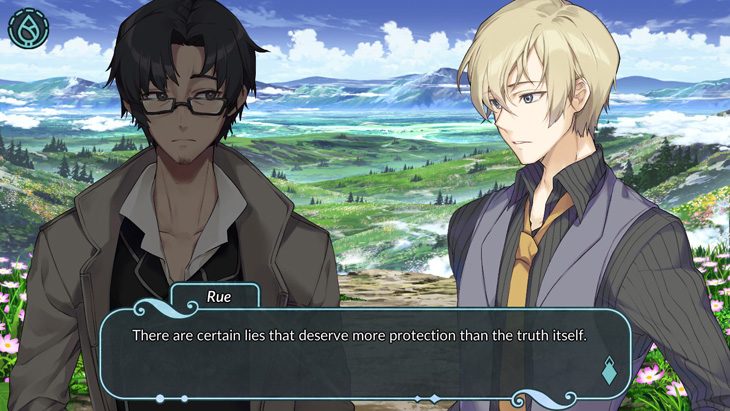
There’s some incredible artwork in this game and the only problem is that it’s difficult to show due to its nature as spoilers. Appropriately, the best CGs seem reserved for the deaths of characters.
There is one problem with the art direction, and that’s the overuse of graphical effects. During an early Main Story scene, making the wrong choice gets you mysteriously killed. This death is accompanied by a flashing strobe effect that’s second in intensity only to Electric Soldier Porygon. This is only mild hyperbole, don’t play this game if you’re sensitive to flashing lights.
The game has no voice acting, which is reasonable as not many western VNs do (and more than a handful of Japanese ones don’t either). Some of the background music is incredibly catchy but there’s no songs with lyrics or any that stand out as notable.

Ultimately, Lotus Reverie: First Nexus is a dramatic story with compelling characters and outstanding artwork that’s actually diminished by the inclusion of combat mechanics. I understand wanting to try and appeal to a broader audience with gameplay on top of narrative in a visual novel, but the game ultimately fails to make the combat relevant, meaningful, or enjoyable.
It feels unfair to punish the game for content that is ultimately optional. However the game’s visual novel elements are so good, it’s worth the price of admission if you ignore the combat entirely; and this is reflected in our final score.
Lotus Reverie: First Nexus was reviewed on Windows PC using a review code provided by Keinart Lobre. You can find additional information about Niche Gamer’s review/ethics policy here.